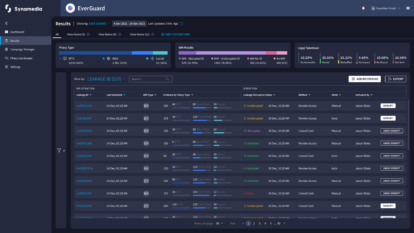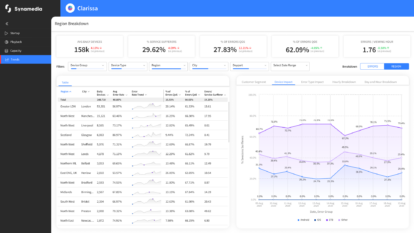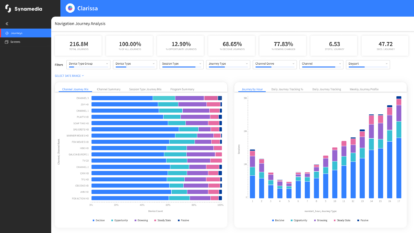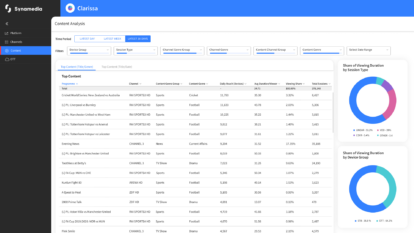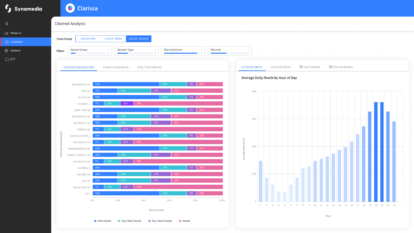Today’s online piracy is more sophisticated than ever before. And broadcasters need to use their right to fight back.
Almost thirteen years ago, I moved from the public sector into the broadcast medium, at a time when the pay TV industry had recently moved from analogue to digital. The piracy landscape was also evolving with these changes, and the last thirteen years have attested to the industry’s almost unparalleled ability to adapt. Having experienced analogue piracy, digital piracy, and smart card hacks, the industry managed to align strategies, technology and security suites to counter those threats.
The Evolution of Online Piracy
One technique that pirates employed at the time was control-word sharing, a phenomenon enabled by the ever-increasing capabilities and opportunities presented by the world wide web. Whilst that threat has still not been completely neutralised even today, it has become second fiddle to online piracy cases. Conducted wholly over the Internet, online, or streaming piracy involves an unprecedented level of not only subscribers, but also broadcast quality due to modern day bandwidths and latency.
The Internet not only makes illegal streaming possible but also allows for a good level of anonymity. Pirates can reach a huge geography through advertising and subscribers. Control-word sharing relies on those wanting pirated content to have the ability to receive a legitimate broadcast signal — without requiring a legitimate subscription — by being under the broadcaster’s satellite footprint. Streaming, however, negates this requirement. All that recipients need is an Internet connection of moderate speed, and they can be located anywhere in the world. Whilst some streamers have pitched their illicit offerings towards certain geographies, others offer content from almost every country around the globe.
Solutions to Online Piracy
Broadcasters and their technology partners again adapted their security products to confront control word sharing. They even used existing legislation to prosecute and disrupt the piracy landscape, also creating new case law, making it a computer misuse offence in certain countries. Illegal streaming, on the other hand, has been much more difficult to prosecute and disrupt, due to the nature of its infrastructure.
Moreover, control-word sharing enhances the world of streaming piracy, as it can be used as a source of the video. Again, the industry has adapted by applying security measures such as fingerprinting and watermarking and using sophisticated piracy monitoring tools. But in this game of cat & mouse, the pirates have responded by sourcing encoders that remove the fingerprints and watermarks, allowing them to even insert their own brand logos. By simply capturing a source feed, perhaps from the HDMI output of a legitimate set-top box (STB), pirates can then convert the HDMI signal to an Internet Protocol using a HDMI to IP encoder. They can then send this protocol over the internet to either a single recipient or multiple recipients. By delivering thousands of channels to thousands of users, wrapped in a fully branded UI, pirates have effectively tricked innocent consumers into registering with their illicit services. This poses a serious competitive threat to legitimate video service providers.
The powers that be have tried to create, and then adapt, legislation to keep pace with streaming piracy as it develops. They have issued take down requests and dynamic blocking orders allowing infringed parties to take legal action that forces ISPs in some countries to block the illicit source IPs.
Once again, the pirates responded with various tactics, such as constantly moving their servers using VPNs, HTTPS, encrypted channels and encrypted social media chats to notify their users of any changes.
The Rising Cost of Illegal Sports Streaming
Probably the most damaging form of illegal streaming piracy is when it comes to live sporting events, where broadcast rights are particularly expensive, and the broadcast timeframe is limited. If broadcasters and their technology partners can identify the source of the stream, then under Article 14 of the Electronic Commerce Directive, or the DMCA, they can contact the hosting provider, provide evidence, and request that the infringing content be removed. This, in itself, can be problematic as it depends on the hosting provider not only acting on the information, but doing so in a timely manner.
Broadcasters and their technology partners could, of course, present evidence of infringers before the police and prosecutors every week of the year. But this is not a feasible solution as law enforcement agencies don’t have the resources to deal with the ever-increasing complaints. And even if they did, the prosecution process might be so prolonged to deem it almost irrelevant.
Whilst referred to as online piracy or streaming piracy, is this not just another type of cybercrime or even a form of cyber-attack, causing harm and a loss to the victim? Does this then not permit the victim to apply a certain level of Self-Defence or Active Cyber Defence (ACD) when dealing with a threat?
The Right to Proactive Anti-Piracy Measures
Cyber Defence has become a normal occurrence when dealing with national security. In the private sector honeypots, beacons and address hopping have also been used. Increasingly, we see businesses, companies and institutions willing to consider fighting back by acting in self-defence or pre-empting attacks with technological solutions in a similar way to nation states.
Is it not about time that the broadcasters and technology partners removed their gloves and began a to defend themselves and their content with limited pre-emptive action against those who illegally stream their content?
Perhaps victims should be empowered to identify the pirates’ infrastructure, authentication servers, and content servers, and disrupt them albeit without damaging another’s infrastructure. The idea is to make the viewing of pirated content intolerable.
For more information, check out our anti-piracy and illegal streaming solution.
About the Author
Neil Atkinson leads Synamedia’s enforcement effort by working globally with our customers, technology partners, competitors, industry bodies and law enforcement community to combat audio-visual piracy. Neil is part of a team that works through the courts and uses technological measures whilst lobbying governments and law makers to legislate more robustly against this type of crime. Neil came to the industry with over 20 year’ experience as a detective in all areas of crime, in over a dozen countries, and has supported the UK government’s commitment to protect its’ citizens and assets from crime and terrorism.
